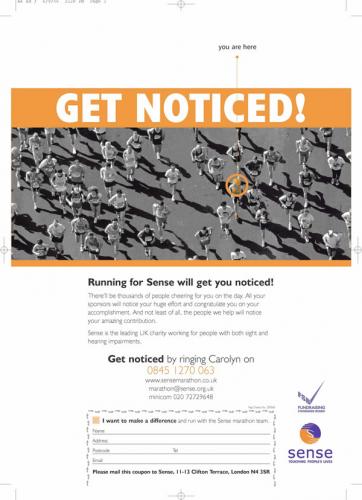Notes on Howard Lake's presentation on using Twitter for fundraising events
Howard Lake spoke on "Using Twitter to increase event participation" at Classic Tours' one-day seminar on new technology and social media in London on 13 November 2012.
Finding participants via Twitter.
Free tool: Twilert is like the Google Alerts for Twitter: it emails you a digest of people talking about your organisation or your cause/event/theme/etc.
Other similar tools include Tweetbeep, Samepoint, Socialoomph
Advertisement
If you don't find and contact people tweeting "I want to do a bike ride on the great wall of china" someone else will!
Example: Roman circus discovered in Colechester. Wanted to see a visitor centre there. Clubbed together with 4 other grumpy Colechester residents, all with day jobs. Tried to raise money to fund a visitor centre for it, using Twitter and Facebook – worked with a local heritage organisation (Colchester Archaeological Trust). Not ill people, not kids, nine weeks deadline, depths of recession, and the builders were moving in.
Used tweet.grader.com/location and found the people who said they were in Colchester and had large followings. Found Tony Gardner, actor from Jack Dee's TV series 'Lead Balloon'. Steve Lamacq, Caroline Lawence (children's author). Richard Madeley. All agreed to support campaign after being asked on Twitter. And some retweeted a lot!
Camulodunum – the Roman word for Colchester. If someone tweeted this, they were obviously in the target group!
Caroline Lawence tweeted like mad, and got them on the BBC's One Show!
Got a 4 week extension: 13 weeks in total. Did Twitter and Facebook, did meet people, and have events. Raised £250,000 from nothing, centre now being built.
Encouraging event participants to share via Twitter
1. Tell them, inspire them to share.
"Best way to fundraise online: Stop fundraising, start inspiring action" Beate Sørum on Twitter, tweeting a quote from @TedHart at 29thIFC.
Automatically make them think to tweet or Facebook, and ideally link to sign up, or the charity page about the event.
Most people recognise the hashtag, some may scribble on on their running vest, or get get photographed in tshirts with hashtags.
2. Reshare their content
3. Put the words in their mouth, make it easy for them.
Give them pre-written tweets they can post with a click (including a link of course). "In sub-Saharan Africa, women spend 15-17 hrs/week collecting water." – From Twestival 2009.
Tools and tips to get them to do more for you.
Before, during and after the event.
Twitter can let you over-do it a bit more than on Facebook and email.
2.8 hours, the half life of a link on Twitter. 7.4 hours on YouTube. Probably less now.
Twitter is about NOW. Find people talking about you now, and reply to them, anywhere in the world.
Social commerce: Help people brag about what they've bought or done. Get them to share the wonderful honeymoon feeling of doing something good for charity. Look at your site, any forms, any partner sites, at the crunch point – get them to share!
If someone signs up for the UK Fundraising newsletter they have the option to tweet it. And some actually do!
Twitter was built to be mobile. Images, audio, other apps (e.g. running tracker): all link in neatly with Twitter, enabling you to share.
Curation is… king? "Curation, not creation, is king" – Guy Kawasaki, co-founder of Alltop.
Gather the best tweets, photos, etc from participants. Gather them up, use them to share how good your events are.
BHF use Storify (free tool alert) – drag and drop content from social sites to create a list. Pictures grab your attention, with occasional tweets. Things are moving to images more and more. Words still matter, but images are on the up. Imagine the feeling of one of your supporters that your charity has chosen their picture and are sharing it.
Other things
"The fact that I follow you on Twitter but you don't follow me is further proof you're not willing to put any effort into this relationship" – you don't have to follow everyone that mentions you, or that follows you, including event runners, if it's not interesting to you.
The quality of people matters most – people more likely to share.
Use bit.ly to track the clicks, and Google Analytics, to see how Twitter is actually contributing to your efforts.
You can create a Twitter account for specific, big events. That's fine. Helps you not overwhelm other supporters with stuff about an event.
You can use Twitter to peak into other people's conferences and training sessions. Twitter is a fabulous tool for sharing info amongst professionals.
If you don't use it you won't go bust, but it's powerful and creative thing for you AND your supporters. It's changing all the time, so you need to keep up.
"Save earth: It's the only planet with Twitter!" – so give it a go and see if it works for you.
Questions
What about older people? Can we reach them?
Give it a go, test it. SUprisingly twitter isn't as popular with younger people so could well be useful.
Matt Howarth is co-founder of Reason Digital, a social enterprise web agency, that helps charities to raise funds and do a little good using the web.




